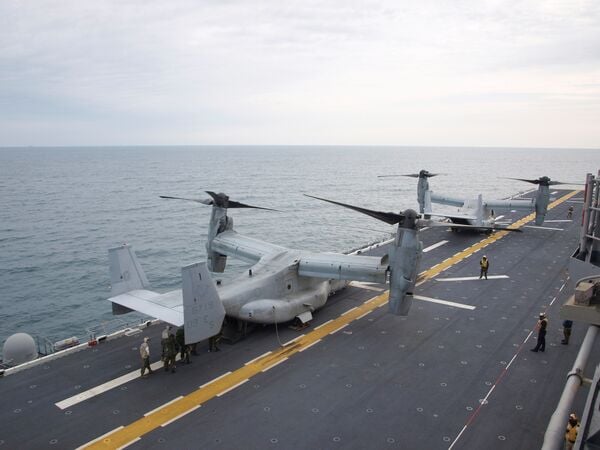
The USMC relies on maritime platforms like amphibious assault ships, pictured here, logistics vessels, and connectors. (Janes/Michael Fabey)
The US Marine Corps (USMC) will need interim connectors as the service awaits its fleet of planned 35 medium landing ships or what the US Navy (USN) calls landing ships medium (LSMs), according to General Eric Smith, USMC commandant.
“We must exploit existing commercial and military capabilities that require minimal modification and can provide sustainment and littoral mobility until the LSM is fully procured,” Gen Smith said in his 39th Commandant's Planning Guidance, released on 29 August.
“This effort will be temporary in nature, intended as a hedge to support near-term requirements,” Gen Smith said in the guidance.
“The LSM is not an amphibious warship; it is a connector that provides a unique capability,” he pointed out.
“Based upon the current procurement schedule for the LSM, the service requires a near-to-mid-term Littoral Maneuver Bridging Solution (LMBS) that provides a level of organic mobility to the stand-in force until the LSM fleet is fielded,” Gen Smith said. “The two leased stern-landing vessels scheduled to complete delivery in FY [fiscal year] [20]26 are vital to service experimentation but will not satisfy our near-term mobility requirements.”
The connectors' role is significantly different than those of amphibious warship ships (AWSs), Gen Smith noted.
“An organic shore-to-shore surface connector capability is critical to supporting the mobility and sustainment of Marine Littoral Regiments (MLRs) and the stand-in force,” Gen Smith said. “The procurement of no fewer than 35 medium landing ships remains the marine corps' main effort to build this capability and is separate from the congressionally mandated 31 AWS.”
Looking to read the full article?
Gain unlimited access to Janes news and more...







